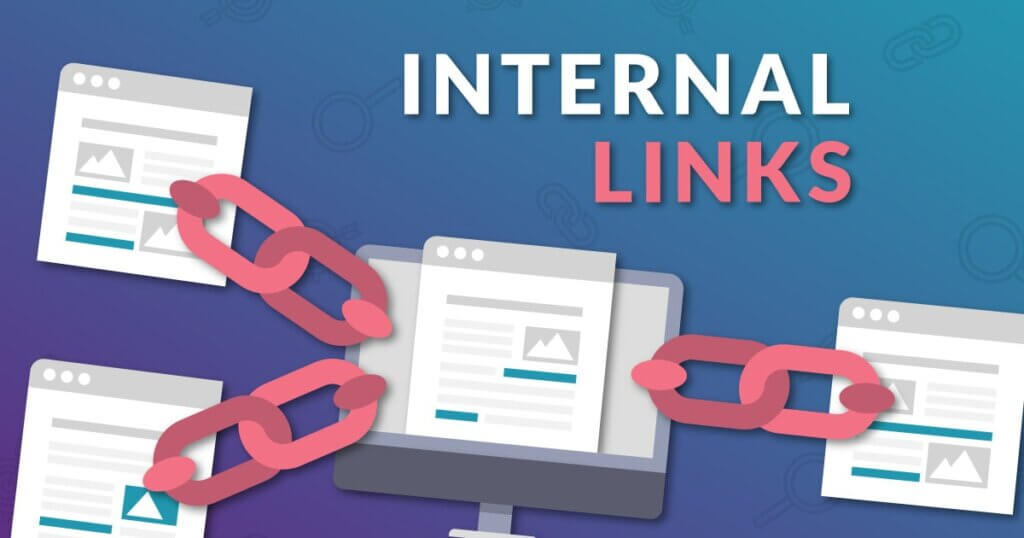Are you looking to boost your website’s search engine rankings and drive more page traffic? If so, then you need to understand the power of internal linking.
Internal linking is a vital aspect of SEO that can help you to establish a robust website architecture, enhance user experience, and improve your search engine rankings. In this ultimate guide, we’ll take you through everything you need to know about internal linking, why it matters, and how to do it right.
What is Internal Linking?
Internal linking refers to linking one page on your website to another page on the same site. These links can help visitors navigate your site, highlight important content, and establish a hierarchy of information.
From an SEO perspective, internal links are critical because they help search engines crawl and index your site more effectively. When a search engine crawls a page on your site, it will follow any internal links it finds, which can help it to discover new pages and understand the context of your content.
Why is Internal Linking Important for SEO?
Internal linking is essential for SEO because it can help to:
- Establish a hierarchy of information: By using internal links, you can show search engines which pages on your site are the most important and which are supporting pages.
- Spread link equity: Link equity refers to the authority and values a page passes on to other carriers through its links. By linking to other pages on your site, you can help to spread this link equity and boost the rankings of your other pages.
- Improve crawlability: Internal links can help search engines crawl and index your site more efficiently, ensuring all your pages are discovered and understood.
How to Do Internal Linking Right
You must follow some best practices to get the most out of internal linking. Here are our top tips for inner linking success:
1. Start with a Strong Site Structure
Before you start linking between pages on your site, you must ensure a strong site structure. This means creating a clear hierarchy of pages, with your most important content at the top and supporting pages beneath it.
2. Use Relevant Anchor Text
Anchor text is the text that you use to link from one page to another. To optimize your internal links for SEO, you should use relevant, descriptive anchor text that gives search engines an idea of what the linked-to page is about.
3. Link to Relevant Pages
When linking between pages on your site, it’s essential to link to relevant pages that offer additional value to your visitors. This can help keep users engaged with your site and increase their time on your pages.
4. Use Follow Links
There are two types of links that you can use on your site: follow links and nofollow links. Follow links pass link equity from one page to another, while nofollow links do not. It would be best to use follow links wherever possible to boost the SEO value of your internal links.
5. Avoid Linking to Low-Quality Pages
While internal linking is important, avoiding linking to low-quality pages on your site is also essential. This can harm your overall SEO efforts and reduce the effectiveness of your internal links.
Conclusion
Internal linking is a critical aspect of SEO that can help to boost your search engine rankings and drive more traffic to your site. Following the tips outlined in this guide, you can create a solid internal linking strategy that improves your website architecture, enhances user experience, and boosts your overall SEO success.
So what are you waiting for? Start optimizing your internal links today and watch your search engine rankings soar!
FAQs
What is internal linking with an example?
Internal linking is linking to other pages or content within the same website. It is a strategy used in search engine optimization (SEO) to help search engines understand the structure and hierarchy of a website and guide users to related content.
For example, you have a blog post about “10 tips for running a successful online business”. Within this blog post, you can include internal links to other relevant content on your website, such as a page on “how to create a business plan” or a blog post on “the benefits of social media marketing for small businesses.” Doing so provides additional value to the reader and increases the time they spend on your website, which can improve your website’s search engine rankings.
Another example of internal linking is navigation menus or footer links that help users navigate to different pages within a website. This can include links to product pages, category pages, blog posts, or other relevant content.
Overall, internal linking is an essential aspect of website design and SEO. It helps improve user experience and website navigation and establish the authority and relevance of different pages within a website.
What are internal and external linking?
Internal and external linking are links used in website content to connect different pages or websites.
Internal linking refers to other pages or content within the same website. For example, a blog post may link to a related article on the same blog, or a product page may link to a relevant category page. Internal linking helps to establish the hierarchy and structure of a website, improves user navigation, and can also help to distribute link equity and improve the ranking of different pages within a website.
External linking, on the other hand, refers to linking to pages or content on other websites. For example, a blog post may link to a relevant news article or a research paper on a different website. External linking helps to provide additional context and value to readers, as well as to establish connections with other websites and improve the website’s authority and reputation.
Both internal and external linking are essential aspects of website design and SEO, as they help to establish connections between different pages and websites, improve user experience and navigation, and help search engines understand the relevance and authority of other carriers and websites.





